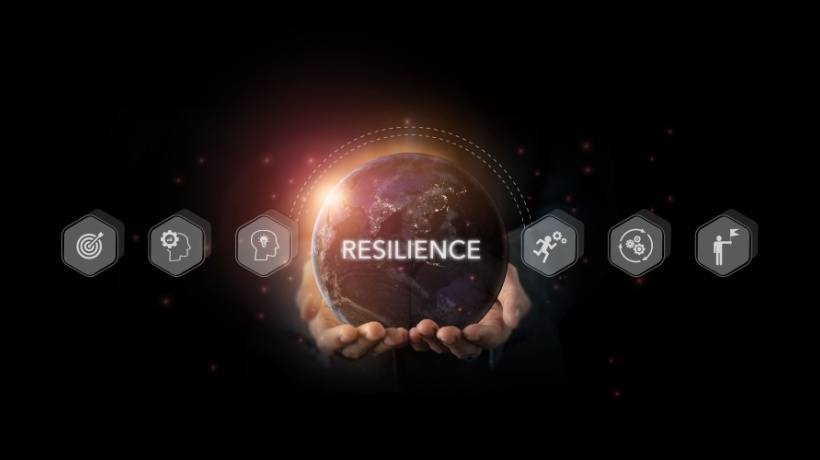Resiliency In Online Education Leadership
Resiliency is adapting to change, overcoming obstacles, and remaining positive and focused in adversity. In the context of online education leadership, resiliency is essential for navigating the challenges and uncertainties that come with implementing and managing online education programs.
Resiliency In Online Education Leadership Is Essential For Navigating Challenges
1. Achieving Buy-In From Hesitant Stakeholders
One of the biggest challenges of implementing online education programs is getting buy-in from stakeholders who are hesitant or resistant to change. This can include faculty members who are skeptical of online teaching, administrators who are wary of the costs and risks associated with online education, and students who prefer traditional classroom settings.
To achieve buy-in from hesitant stakeholders, it is essential to understand their concerns and address them directly. This may involve providing data and research demonstrating online education's benefits, such as increased student access and flexibility. It may also involve providing training and support for faculty members new to online teaching or developing policies and procedures addressing concerns around quality and rigor in online courses.
2. Recognizing When Buy-In Will Not Occur And Making Compromises
Despite best efforts, there may be cases where buy-in will not occur. In these situations, online education leaders need to recognize when to make compromises to make progress. This may involve scaling back on specific initiatives or finding alternative approaches more palatable to hesitant stakeholders.
For example, if faculty members resist teaching fully online courses, a compromise might be to develop hybrid courses that combine online and in-person instruction. Suppose administrators are concerned about the costs of online education. In that case, a compromise might be to start with a minor pilot program to demonstrate the effectiveness of online courses before scaling up.
3. Developing Realistic Plans Based On Capabilities
Another critical strategy for building resiliency in online education leadership is to develop realistic plans based on the institution's capabilities. It is essential to recognize that not all institutions have the same resources or expertise regarding online education. Therefore, assessing the institution's capabilities and developing a feasible and sustainable plan is essential.
This may involve conducting a needs assessment to determine what resources and support will be required to implement online education programs. It may also involve developing a phased approach to implementation that allows the institution to build capacity over time. Online education leaders can set achievable goals and avoid unrealistic expectations by developing a realistic plan based on the institution's capabilities.
4. Training Faculty And Ensuring Best Practices Are Followed
One of the most critical components of successful online education programs is the quality of online instruction. Therefore, training faculty members, ensuring they teach online correctly, and following the institution's best practices is essential.
This may involve providing professional development opportunities for faculty members to learn about online teaching strategies, technologies, and pedagogies. It may also involve developing standards or guidelines for online instruction that faculty members must follow. By investing in faculty training and ensuring that best practices are followed, online education leaders can ensure students receive a high-quality online education experience.
5. Building A Resilient Online Education And Instructional Design Team
Another critical strategy is building a resilient online education and Instructional Design team that understands not every initiative will be a success or go as planned, so it is vital to pivot and keep innovating. A resilient online education and Instructional Design team can adapt to changing circumstances and work collaboratively to achieve common goals. Building such a team requires effective leadership, communication, and team-building strategies.
- First, it is crucial to create a shared vision and mission for the team that aligns with the institution's overall strategic goals for online education. This helps ensure that everyone is working towards the same objectives and clearly understands their expectations.
- Second, leaders should foster a culture of collaboration and communication, encouraging team members to share their ideas and perspectives and providing regular opportunities for feedback and discussion. This helps ensure everyone is on the same page and working together toward common goals.
- Third, it is essential to provide ongoing training and professional development opportunities to ensure that team members have the skills and knowledge necessary to succeed in their roles. This can include training on Instructional Design principles, technology tools, project management, and other relevant topics.
- Finally, leaders should recognize and celebrate the team's successes and team members' individual contributions. This helps foster a sense of pride and ownership in the work and a commitment to continuous improvement.
How To Promote A Culture Of Continuous Improvement With Stakeholders That Initially Were Not Accepting Of The Strategy
Promoting a culture of continuous improvement requires a commitment to ongoing evaluation and feedback, and a willingness to make changes and adapt as needed. This can be particularly challenging when working with stakeholders initially resistant to the strategy.
One effective approach is to involve stakeholders in the evaluation and feedback process from the outset. This can include regular surveys or focus groups to gather feedback on the effectiveness of the online education program, as well as ongoing communication and collaboration with stakeholders to address any concerns or issues that arise. In addition, leaders can demonstrate the value of continuous improvement by highlighting the successes and positive outcomes of the program, as well as the benefits of ongoing evaluation and adaptation. This can help build stakeholders' support and enthusiasm, even if they were initially hesitant or resistant.
Ultimately, the key to promoting a culture of continuous improvement is to remain committed to the process over the long term, recognizing that it is an ongoing journey rather than a destination. By working collaboratively with stakeholders, building a resilient team, and continuously evaluating and adapting the program, leaders can create a successful online education program that meets the needs of students and stakeholders alike.
Conclusion
In conclusion, resiliency is a critical component of effective online education leadership. By achieving buy-in from stakeholders who may be hesitant, recognizing the capabilities of the institution and developing a realistic plan, training faculty and building a resilient team, and promoting a culture of continuous improvement, leaders can create a successful online education program that meets the needs of students and stakeholders alike. As online education continues to grow and evolve, prioritizing resiliency and adaptability is more important than ever to ensure success.








